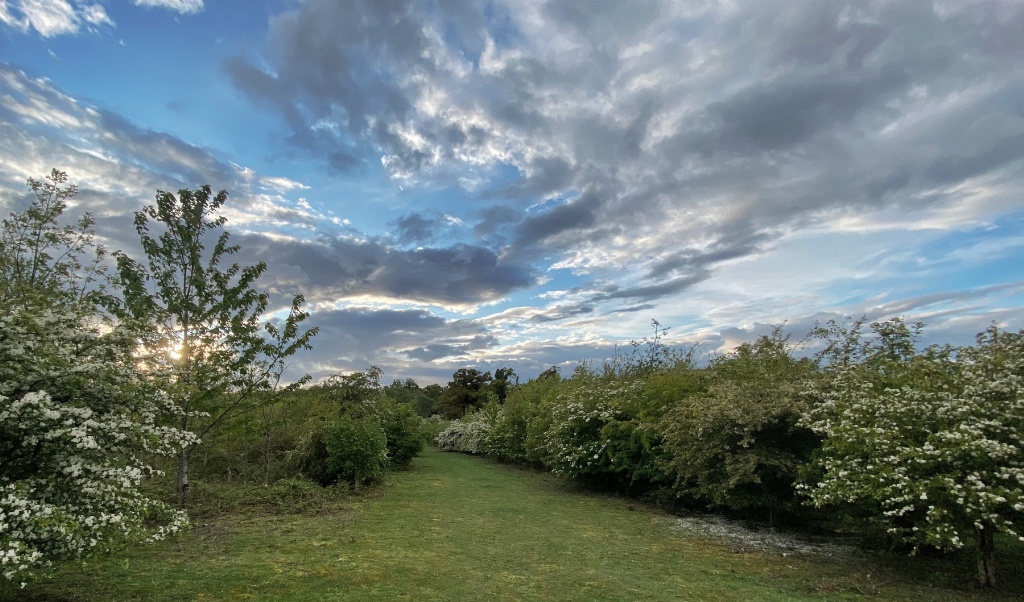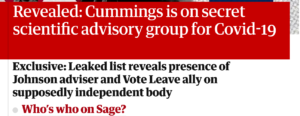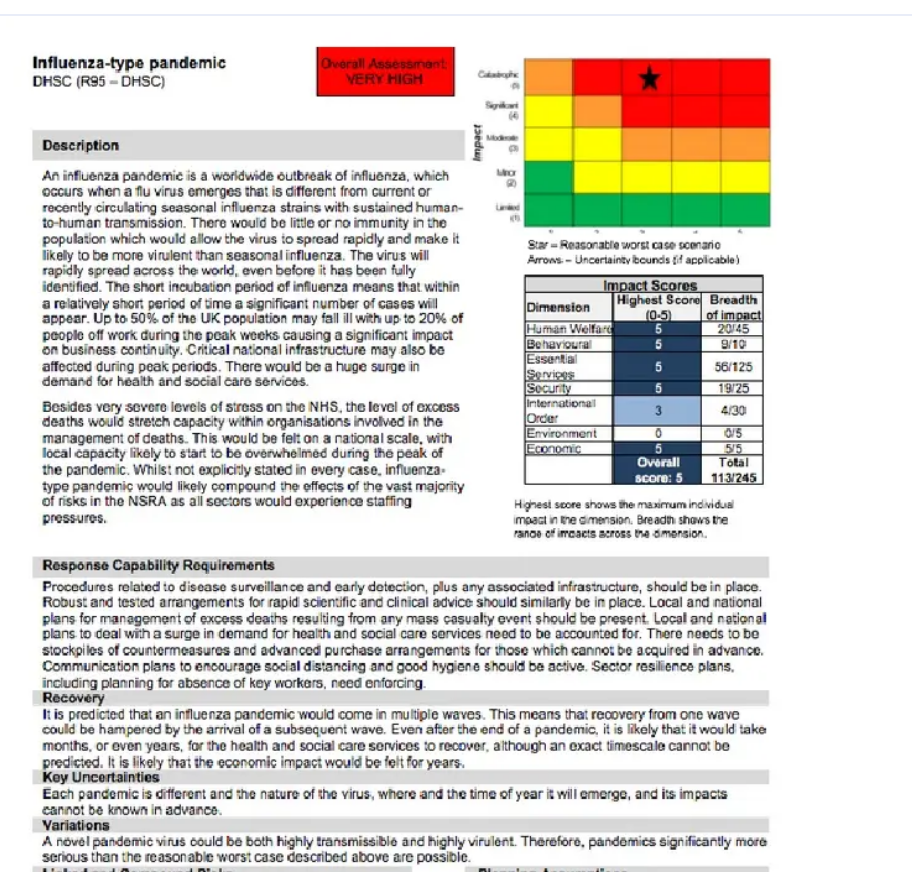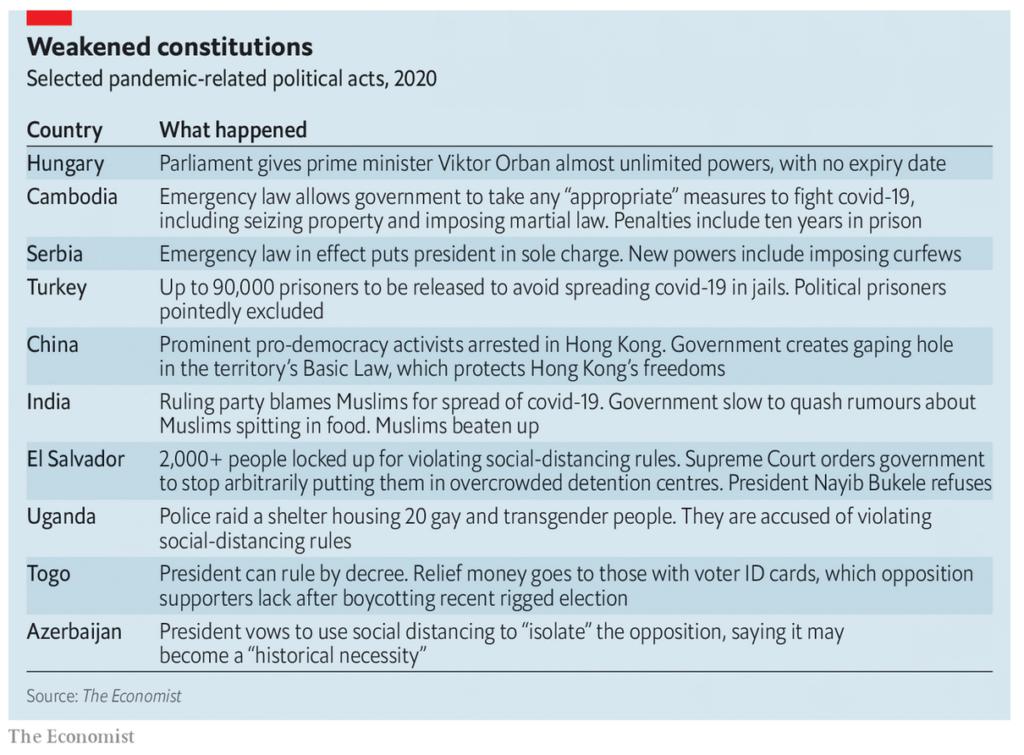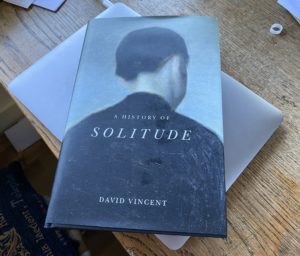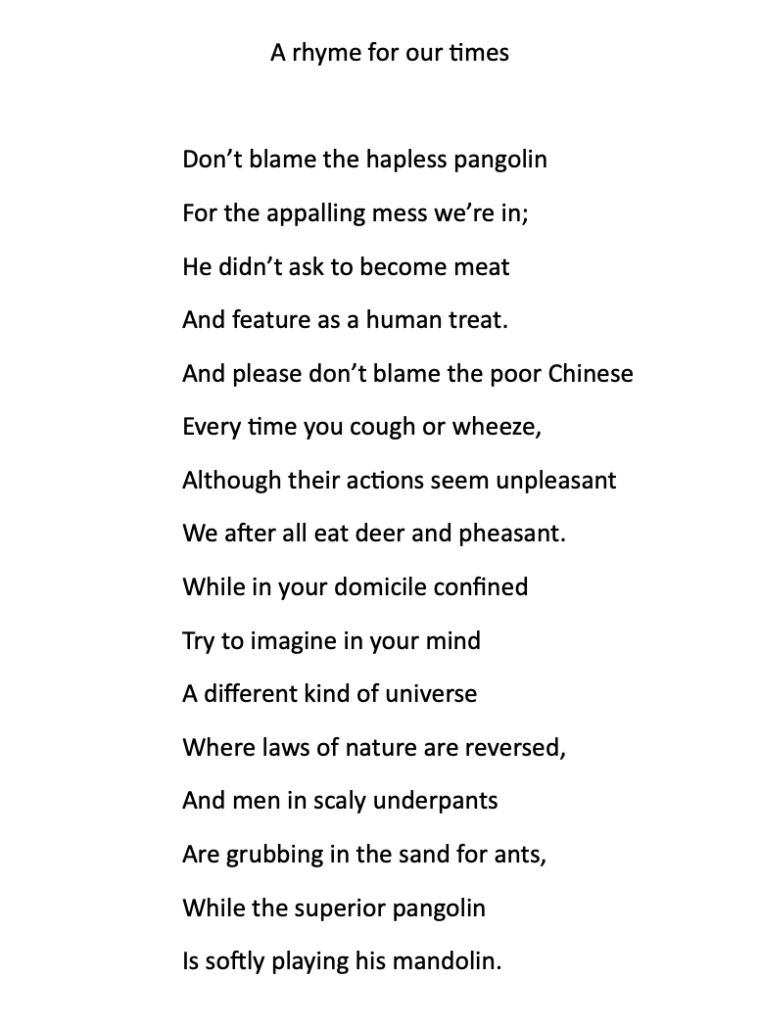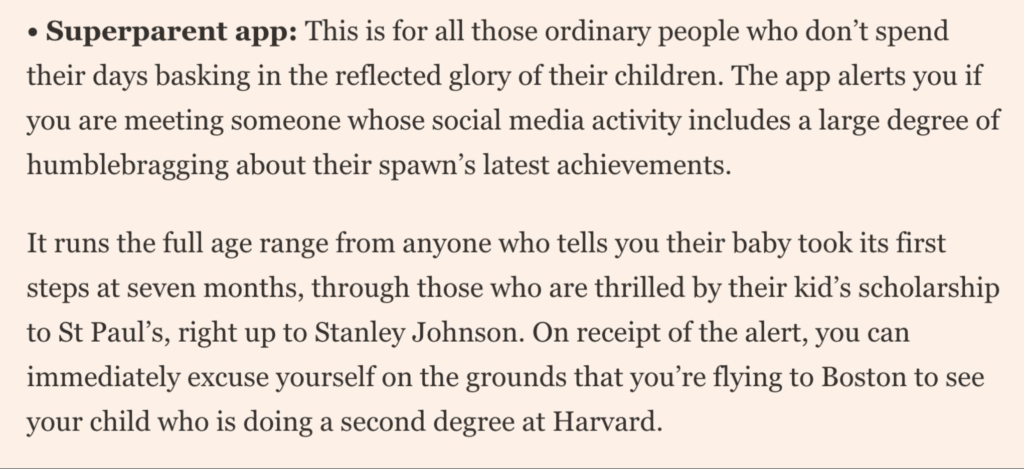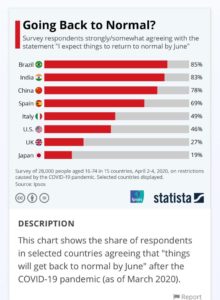Evening exercise
On our walk yesterday evening, after the rain.
Quote of the Day
“There’s no better time than now to get in touch with the people you used to know.”
(Apart from anything else, they won’t be around forever.)
Which companies will survive the pandemic in good shape? Do you have to ask?
Useful analysis by the Economist:
Amid the chaos one thing, at least, is clear: a few powerful firms are set to gain more clout. Already some are a source of financial stability. It costs less to insure Johnson & Johnson’s debt against default than Canada’s. Apple’s gross cash pile of $207bn exceeds most countries’ fiscal stimulus. Unilever is funnelling cash to its army of suppliers (see article). In the long run this group of firms—call them the top dogs—may win market share by investing more heavily than, or buying, enfeebled rivals. The catch is that the post-pandemic world will put these corporate champions on a leash.
Downturns are capitalism’s sorting mechanism, revealing weak business models and stretched balance-sheets. In the past three recessions the share prices of American firms in the top quartile of each of ten sectors rose by 6% on average, while those in the bottom quartile fell by 44%. The drop in sales and profits in 2020 will be much steeper, though hopefully shorter, than in a typical slowdown.
A few firms directly hit by travel and shopping bans have spelled out just how steep. On March 23rd Primark, a fashion retailer, said it was shutting all 376 of its stores in 12 countries, forgoing over $770m in sales per month. It expects to save only half its costs. For most firms the picture is murkier, and perhaps not quite as glum. Some factories are still running and white-collar firms operate remotely. So far companies have announced a flurry of cuts to dividends and share buy-backs. But few have said exactly how much cashflow they expect to burn. For most it will be a lot.
Note the observation about Apple’s cash pile.
Contact-tracing apps are not a solution to the COVID-19 crisis
Like I said: there’s no magic tech bullet. The Brookings Institution has published a sensible overview of the issues:
We are concerned by this rising enthusiasm for automated technology as a centerpiece of infection control. Between us, we hold extensive expertise in technology, law and policy, and epidemiology. We have serious doubts that voluntary, anonymous contact tracing through smartphone apps—as Apple, Google, and faculty at a number of academic institutions all propose—can free Americans of the terrible choice between staying home or risking exposure. We worry that contact-tracing apps will serve as vehicles for abuse and disinformation, while providing a false sense of security to justify reopening local and national economies well before it is safe to do so. Our recommendations are aimed at reducing the harm of a technological intervention that seems increasingly inevitable.
The lure of automating the painstaking process of contact tracing is apparent.
But to date, no one has demonstrated that it’s possible to do so reliably despite numerous concurrent attempts. Apps that notify participants of disclosure could, on the margins and in the right conditions, help direct testing resources to those at higher risk. Anything else strikes us as implausible at best, and dangerous at worst.
Thanks to Seb for the link.
The US Higher Education bubble has just burst.
Rana Foroohar had a good piece the other day:
Now, with colleges shuttered, revenues reduced, endowment investments plunging, and the added struggle of shifting from physical to virtual education, Moody’s has downgraded the entire sector to negative from stable. The American Council on Education believes revenues in higher education will decline by $23bn over the next academic year. In one survey this week, 57 per cent of university presidents said they planned to lay off staff. Half said they would merge or eliminate some programmes, while 64 per cent said that long-term financial viability was their most pressing issue. It’s very likely we are about to see the hollowing out of America’s university system.
US universities are world class. But the system as a whole is in trouble. Cost is a big part of the problem. I’ve written many times about the US’s dangerous $2tn student debt load. Soaring tuition fees, worthless degrees and dicey investments made by both universities and the government have become a huge headwind to economic growth and social mobility.
John Cochrane from the Hoover Institution at Stanford is rather less polite:
It’s hard to think of a business model more susceptible to pandemics. Students come to universities from all over the country, and all over the world. Many US colleges are highly dependent on full-tuition revenue from overseas, especially China. College education was a big export industry for the US, which travel and visa restrictions are likely to kill.
Many state schools depend on people paying full tuition from out of state. Lots of people are not likely to want to pay for online classes, and they certainly don’t want to pay more quarters of room and board while living at home in another state.
Classes are really not the problem. Undergraduates barely go to classes anyway, and, as reviewed in previous super-spreader posts, we have not seen classrooms as a site of such events. It seems like if people don’t talk loudly, they don’t spread the virus. The main problem is that the college experience in most of the US centers on a loosely supervised alcohol-fueled bacchanalia. As Stanford’s president put it delicately in a recent email to faculty and staff, “A key challenge is the highly communal nature of our undergraduate living, dining and learning settings, which are not conducive to the physical distancing that has been a key means of controlling the pandemic…”.
How to spread Covid-19? Nursing home. Aircraft Carrier. Cruise Ship. Jail. College dorm or fraternity.
A single “Beer Pong” party where participants shared drink glasses at an Austrian ski resort is credited with producing hundreds of infections in Denmark, Germany, and Norway (Hruby, 2020). reports the excellent NBER working paper on Covid-19 models by Christopher Avery, William Bossert, Adam Clark, Glenn Ellison and Sara Fisher Ellison. Judging by the remains on my daily run past the frats at Stanford, normal life here consists of a lot of beer pong.
He also has some very interesting stuff about the vast endowments of fancy Ivy League schools. The endowments are, of course, enormous. But it turns out that they mostly consist of assets that are not liquid. One’s heart bleeds for the poor dears.
Quarantine diary — Day 41
This blog is now available as a daily email. If you think this might be more useful for you, why not subscribe? One email delivered to your inbox at 7am every day. And there’s a one-click unsubscribe if think your inbox is already too full!)

